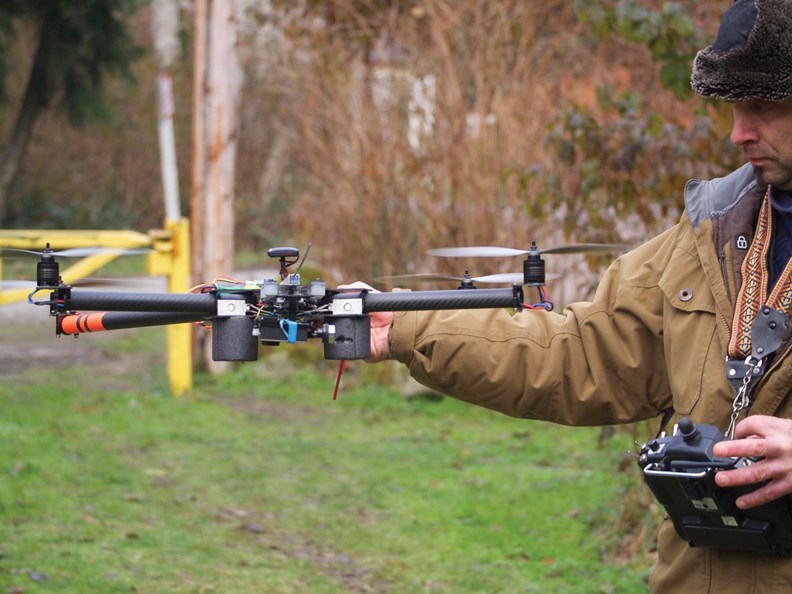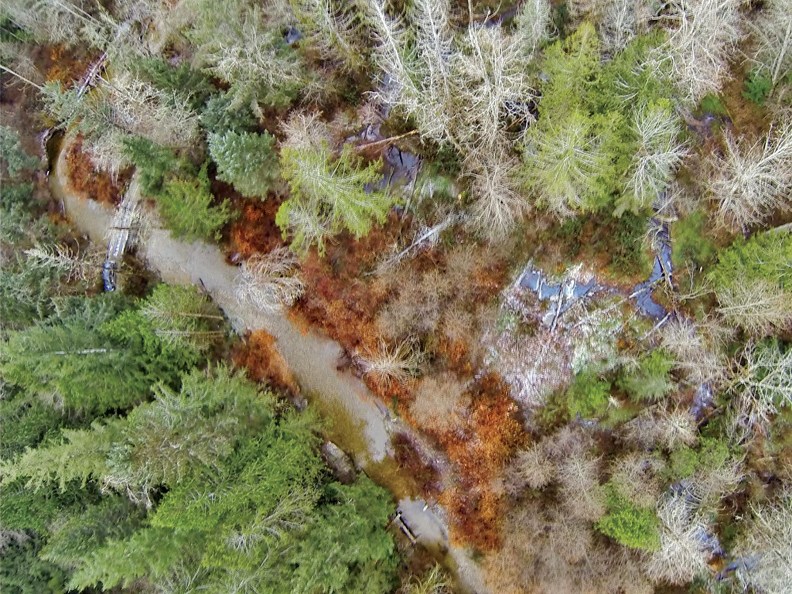The Ruby Lake Lagoon Nature Reserve Society is working towards eliminating the highly invasive Japanese knotweed from Anderson Creek and the sensitive salmon spawning grounds in John Daly Park.
The objective of the Lagoon Society’s program is to produce a report on best practices using Fully Integrated Pest Management principles so that other groups will have a blueprint to follow in their own areas. The size of this problem cannot be underestimated – potentially costing hundreds of thousands of dollars to remediate.
There are now over 200 known invasion sites of this plant on the Sunshine Coast. “Because it wipes out virtually every native plant species where it grows, it is probably now the biggest single cause of loss of biodiversity in this region,” says Dr. Michael Jackson, Lagoon Society chair. “Not only this, but it also has the potential of affecting property prices as it is known to destabilize concrete foundations of buildings and other infrastructure which affects obtaining mortgages in many European countries.”

The Society held a Knotty Forum in March to discuss all the possibilities, which brought together scientists, management practitioners, community members and landowners from across British Columbia.
Research by University of Victoria students and reports from experts with extensive experience in managing Japanese knotweed led the forum to conclude that the only effective option currently available was to use targeted stem injections of herbicide. This would only work following several years of applications, with an accurate monitoring program and replanting with native plants.
The Lagoon Society will work together with the Sunshine Coast Regional District (SCRD) and Culex Environmental Ltd. from Vancouver who have volunteered to help conduct the Integrated Pest Management Action Plan. Research funding has also been applied for in conjunction with the department of ecological toxicology at Simon Fraser University to obtain an NSERC grant to study the fate of glyphosate in the environment.
Initial applications will be limited to a few trial areas in the vicinity of John Daly Park and will be conducted in the fall and the spring to compare results. Monitoring will be conducted using a drone that follows an identical flight path on each monitoring occasion with a camera attachment that specifically picks out the knotweed. Only after these trials have been completed will larger scale applications be initiated.
This program has been funded partly by the Sunshine Coast Community Foundation, and the SCRD has agreed to help pay for the product and materials. The first trial application is scheduled for Sept. 12. John Daly Park will be closed for two days while the work is being completed.
– Submitted



